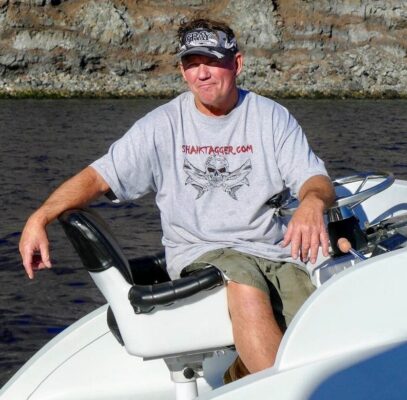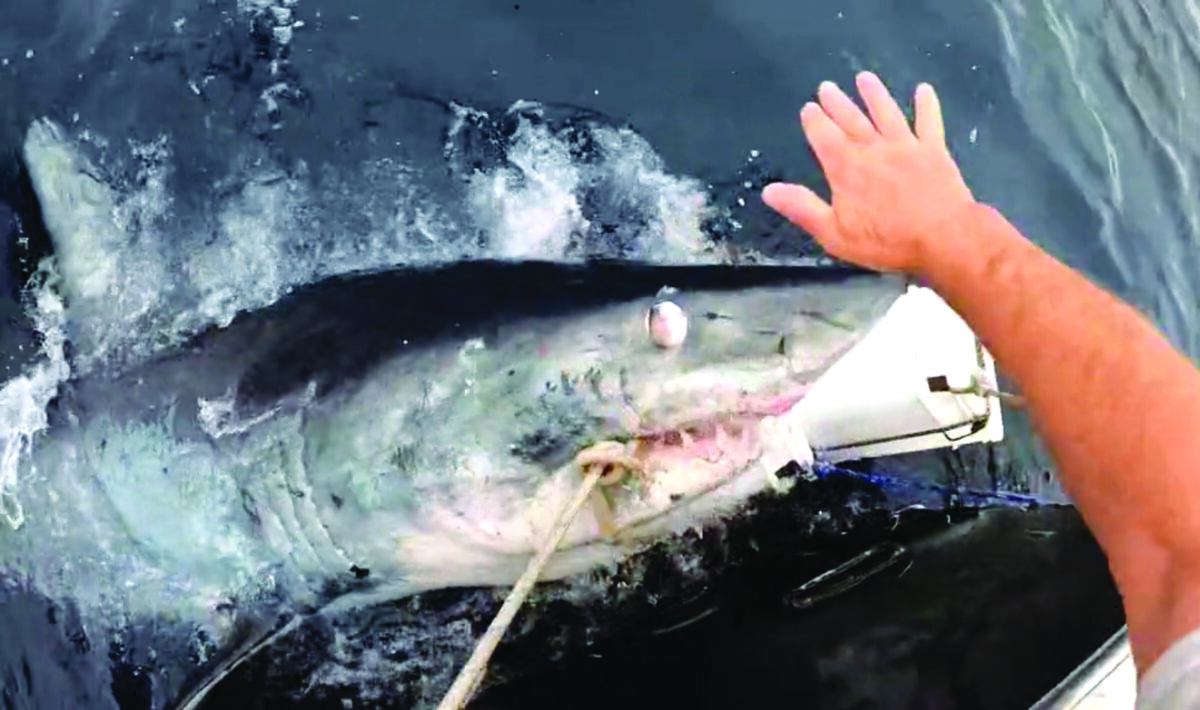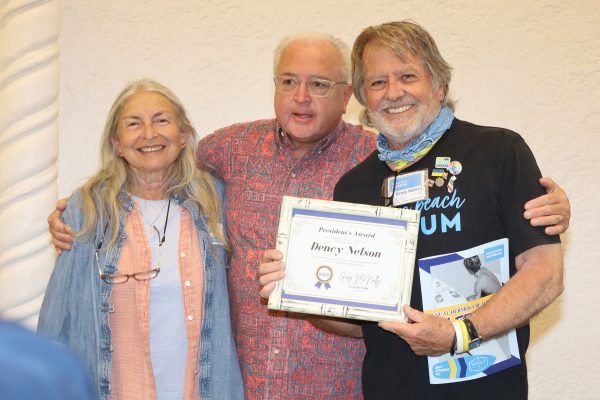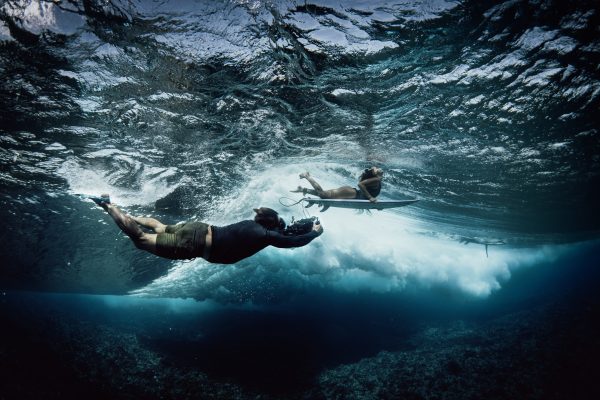by Garth Meyer
First he tore out houses blocks at a time to build the 105 Freeway, with his father as a 15-year-old.
Then, as an adult, his friend asked him if he wanted to go fishing but wouldn’t tell him what for. It turned out it was for “makos and blues” – sharks.
Keith Poe’s life’s work started to take shape.
Next week, or when the weather is favorable, he will set out on a new trip.
“Go up to Santa Barbara to Point Conception, and look for Great Whites to tag,” he said. “We’re studying the migration routes and preferred habitat. We’ve found a new tribe. The different tribes have a preferred habitat,” he said.

He is based in Lomita.
“I had to get a big enough yard to keep my boats in,” Poe said, referring to his 31-foot Bertram and 24-foot Skipjack.
He did construction for his career, which is now wound down to handyman jobs in the South Bay.
“I’m putting most of my energy into doing tagging,” he said. “This trip, we will be out at least two days, if not five.”
He goes by himself “99.9% of the time,” but this time it’s with Dr. Michael Domeier, president/executive director of the Marine Science Conservation Institute.
The goal is to catch and put battery-powered tags on adult female white sharks 15 feet or longer (the length at which they are mature). To find them, “you go where there is an aggregate of seals; populations have exploded since they’ve been protected. Sharks remember where they are,” Poe said.
He also uses water temperature, chlorophyll charts and tracking from other species.
“Imagine a wolf in Yellowstone. A shark arrives and other species clear out,” he said, noting that he would not go into greater detail, citing trade secrets, to protect sharks from trophy hunters.
In general, “the science works and I leave the fishing lore out of it,” Poe said.
He tags the sharks with the “SPOT” method, over the side of the boat. SPOT stands for “Smart Position and Temperature Tag,” which are affixed to near the top of the first dorsal fin. The device transmits a signal to satellites that show the shark’s movements.
Poe first catches the sharks using a hook and bait, on a rope coiled in a trash can. Then he lures them in.
“Teach them the path of least resistance, like breaking a horse,” he said.
He works the rope with welding gloves. Each shark taking 30-45 minutes from catching to tagging.
A pair of gloves lasts about three sharks, Poe said.
He can track all of his taggings on “Expedition Whiteshark” – a computer program by Dr. Domeier.
“You can’t manage something you don’t understand,” he said. “We keep learning. Every time we go out, we learn more.”
He is watching the weather now.
The biggest shark Poe has tagged was a 17-foot female Great White off of Santa Monica Bay.
He said he has seen a 20-foot Great White off of Palos Verdes – one of seven Great Whites fighting over a dead humpback whale that had washed up on Dockweiller Beach and was hauled out to sea by L.A. County Lifeguards.
“They don’t play well. They don’t share,” he said of Great Whites.
How did he know the length?
“I was in a 24-foot boat, and it was almost as long.”
A trip by Dr. Domeier, Poe and other researchers was documented by National Geographic two years ago, titled “Counting Jaws.” In it, Domeier concludes that sharks are seeing a distinct increase in population on the California and Mexican Coast.
Previously, there were two well-documented “tribes” in this span of ocean – not a scientific word – then researchers deciphered a new tribe named the “Point Conception Tribe.”
Poe started working with sharks as a volunteer in the mid-’90s with the California Department of Fish & Wildlife, using conventional tags. He has since coordinated with agencies such as NOAA Southwest Fisheries Science Center, Cal State-Long Beach, and Scripps Institute of Oceanography, and has made many appearances on Discovery Channel’s “Shark Week.”
The SPOT tags generally last 4-5 years. One active tag now, on a white shark named “Poe Girl” is on its seventh year, the signal fading out, with no location given.
Are there sharks close to South Bay beaches?
“Generally speaking, juvenile sharks are close in to the beaches, eating fish. The adults are where (their) food is at – and they like to avoid the activity of the shore,” Poe said.
What about the seals you see in King Harbor, can that be an attraction for mature sharks?
“It’s like a wild animal on land, a bear’s not going to come into King Harbor.” ER










